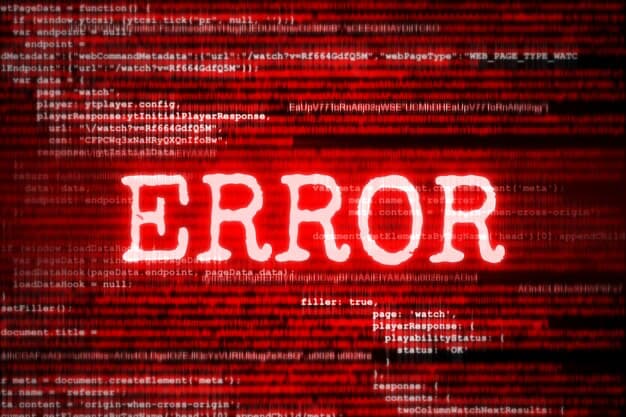Error 300 is a status code that originates from the server that hosts a website. The code usually appears when the server is unsure about how to proceed because the information provided by the client, which could be a web browser or an auditing bot like CheckUpDown, lacks specificity.
Unlike what you might think, an Error 300 doesn’t necessarily signal a problem. Instead, it demonstrates that the server needs more information to point the client in the right direction. More often than not, it occurs when trying to access a directory that requires a more specific document or file selection.
A Deeper Look at Error 300 Dynamics
Imagine trying to access a vast library by asking for a book, without providing the title, author, or genre details. The librarian would likely be in a dilemma about what you’re seeking. This situation conveys the essence of an Error 300.
To put it in more technical terms, let’s consider the URL as a directory in this scenario. The directory is the ‘high-level grouping’ and the individual files inside represent the ‘lower level selections’. Hence, an Error 300 typically arises when the server needs you to provide a more specific request to access the desired data.
Remember, this error is not an impassable roadblock but rather a hint that you need to be more precise.
Helpful Tips to Address Error 300
Handling an Error 300 effectively involves double-checking the URL or the request sent to retrieve the desired data. Here are a few recommendations which can be beneficial:
- Ensure the correct URL string is entered;
- Make certain the path to the intended file within a directory is specified accurately;
- Cross-check for any typographical mistakes in the URL or the request.
Facing an Error 300 should not lead to panic but rather careful evaluation of the request sent.
Unraveling the Mysteries of Error 300: The Indecisive Web Server Code
Error 300 is a phenomenon mainly experienced when interfacing with a web server, whether via a web browser or automated internet bots such as CheckUpDown. The error typically occurs when the server finds the information provided by the client, like the URL, to be inadequate or underdefined and thus requires additional specifics to proceed.
Usually, this situation arises when the URL corresponds to a broader grouping, and the server requires the client to make smaller, more detailed selections. An excellent comparison would be a tree, where the URL is the tree’s trunk, and the server needs the client to specify a particular branch or leaf to continue the process effectively.
Diving Deeper into the Dynamics of Error 300
To comprehend the workings of Error 300 fully, consider this analogy: walking into a large library looking for a book but not giving the librarian the title, author, or even the genre. The librarian (or server in this case) is then left baffled, not knowing where to guide you. That’s the gist of Error 300.
In this case, the URL represents the directory – the broad grouping like the library. The individual files inside are the lower-level selections, similar to the specific books in the library. Therefore, Error 300 mainly pops up when the server expects you to make a more precise request to retrieve the required data.
Remember, this error is less of a hindrance and more of a signal to be more explicit with your request or information.
Strategies to Effectively Resolve Error 300
Dealing with Error 300 primarily involves meticulous reviewing of the URL or the request sent to fetch the desired data. Here are some useful tips:
- Make sure the correct URL string is typed in;
- Verify that the path to the required file within the directory is accurately spelled out;
- Double-check for any grammatical or spelling errors in the URL or the request.
Encountering an Error 300 should not be a cause for alarm but rather a call for thorough examination of the information sent to the server.

Unraveling the Journey of Error 300 through the HTTP Cycle
Every client—whether it’s a web browser or proactive web-crawling bots like CheckUpDown—follows a certain path while communicating with a web server. This process, the HTTP cycle, includes four main steps:
- The client begins by decoding the IP name from the website’s URL, excluding the leading ‘http://’. This conversion is managed by domain name servers (DNSs);
- Next, the client establishes an IP socket connection to the decoded IP address;
- It then transmits an HTTP data stream via this socket;
- Finally, the client obtains an HTTP data stream from the server in response. Embedded in this data stream are status codes, which are identified and categorized as per the HTTP protocol’s guidelines.
Error 300 arises in this final phase when the client acknowledges the status code ‘300’ within the incoming data stream.
Navigating the Terrain of Error 407
Error 407 materializes when a client seeks access to a resource through a proxy server but is met with a challenge. This challenge necessitates the provision of proper authentication credentials before the proxy server will grant access to the desired resource. In essence, the proxy server acts as a gatekeeper, demanding verification of the client’s identity.
Much like Error 300, Error 407 underscores the need for precision and specificity in digital communication. It reminds us that the intricate dance between clients, servers, and proxies relies on accurate information exchange and secure authentication.
In the intricate tapestry of digital interfaces, where every HTTP status code carries its own unique significance, encountering errors such as Error 300 and Error 407 is inevitable. However, these errors should not be seen as insurmountable obstacles, but rather as opportunities for us to fine-tune our requests and enhance our digital journeys.
As we navigate the complexities of the digital realm, understanding these status codes, like Error 300 and Error 407, empowers us to communicate effectively with web servers and proxies. Armed with this knowledge, we can steer our digital interactions towards more efficient and precise outcomes, ensuring a smoother passage through the labyrinthine landscape of the internet.
Final Thoughts
In the labyrinth of digital interfaces, encountering server errors is an inevitable aspect. However, among these, Error 300 stands as a beacon, guiding us towards more effective interactions with web servers. Recognizing its role as a request for specificity, we’re better equipped to provide precise requests, enhancing our digital journey. Therefore, with this comprehensive understanding, Error 300 ceases to be a hurdle and transforms into a constructive tool to amplify our navigation within the digital realm.



